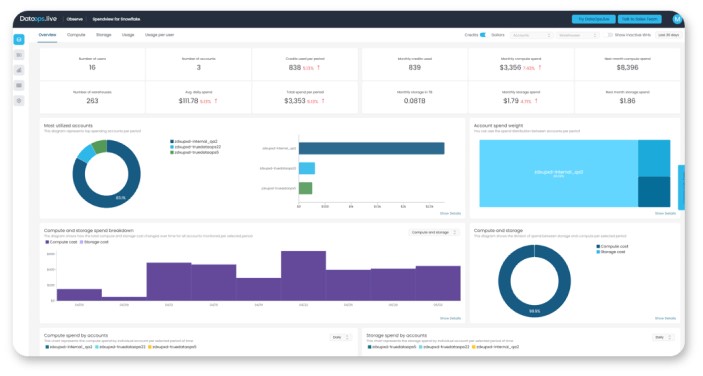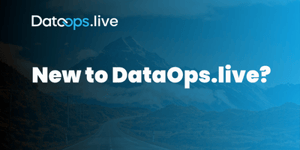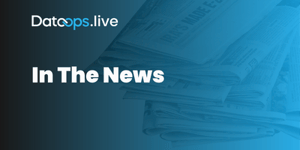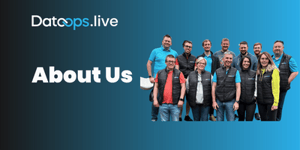In today’s data-driven world, businesses constantly seek innovative solutions to manage and optimize their data operations. DataOps.live, a leading data operations platform, has recently unveiled two groundbreaking features. Data Product Management and Observability change how organizations handle their data.
In this blog post, we will delve into the exciting capabilities of these new additions. We explore how they can empower businesses to harness the full potential of their data assets.
Data Product Management
Data Product Management: turning data into actionable products DataOps.live’s Data Product Management feature introduces a significantly improved approach to data operations. It enables organizations to treat their data as valuable products rather than static assets. This feature allows businesses to define, build, and manage data products aligned with their objectives and end-user requirements.
Everyone can build Data Products!
Data Product Management streamlines the entire data product lifecycle, from ideation and development to deployment and maintenance. By leveraging this set of features, businesses can foster cross-functional collaboration. Data Products need to meet the needs of various teams and stakeholders. Moreover, integrating Data Products into existing workflows and systems, enabling seamless access to data assets is required.
Data Product Management adopts many best practices established with software developers.
First, you must manage data as a product. Like any product, your data needs a roadmap.
Change requests originating from your stakeholder will be captured as a ticket. It is easy to track development work with a ticket. Additionally, it is safe to develop in a feature branch before release.
Second, we provide you with the DataOps Development Environment (DDE) to quickly iterate on your requirements. Within the development environment, you can define the Data Product specification. Check the backward compatibility of your datasets built by the data pipeline directly in DDE. To automate, use Git pre-commit hooks, ensuring nothing breaks in production.
Last, we are making it easy to share your Data Product contract with your team members.
Provide an easily readable rendering of your Data Product manifest to everyone. Review the core attributes and datasets with their metadata. Examine the current value of your data quality KPIs. Capture each result as a Service Level Indicator (SLI).
Once your new feature is developed, optionally publish the latest results to your data catalog of choice. Choose from the ones we support today, like data.world or Collibra, and contact us for those up-and-coming.
Comprehensive Observability
Comprehensive Observability: gaining deep insights into Data Operations, the DataOps observability feature introduced by DataOps.live empowers organizations with complete visibility and insights into their data operations. It provides real-time monitoring, tracking, and analysis of data pipelines, workflows, and processes. Observability allows businesses to identify bottlenecks, performance issues, and potential areas for optimization.
Comprehensive observability provides a 360-degree view of your Data Products!
Businesses can improve data operations by proactively identifying and resolving issues. This will lead to increased reliability, efficiency, and accuracy. Ultimately, this will result in better decision-making and improved business outcomes.
We focus on four key groups within your organization: Data Product Owners, DataOps Developers, Data Engineers, and business stakeholders. Our goal is to cater to the needs of all these different users.
Data Product Owners want to understand the cost, monitor the usage, and assess the impact of data products. DataOps developers are focused on the well-being of their data pipelines. They aim to minimize the cost of the infrastructure and evaluate the extent of any runtime issues.
Data executives, such as the Chief Data Officer, must keep track of current spending compared to the budget. They must also understand adoption and usage, as well as manage the budgets for their data teams’ data domain.
With excitement, DataOps.live announces the free Spendview for Snowflake. Anyone with a Snowflake account can use it.
Reduce overall Snowflake spend by 15%!
Spendview offers the first of many comprehensive observability use cases. It focuses on Snowflake operations and is part of a more extensive range of data observability tools to come.

Have you ever wondered about critical questions like:
- Who is my biggest spender?
- Do I have enough and the right size warehouses?
- Are my warehouses and databases healthy?
- Do my users have a good experience using Snowflake?
Spendview answers these questions and more for you with ease.
Conclusion
With the introduction of Data Product Management and Comprehensive Observability, DataOps.live continues redefining the data operations landscape. These powerful features enable businesses to unlock the true value of their data assets, transforming raw data into actionable products and gaining deep insights into their data operations. Companies can confidently manage data operations while adhering to data privacy regulations and industry standards.
By adopting DataOps.live’s innovative platform, organizations can streamline data operations, foster collaboration, optimize performance, and ensure data governance and compliance. Embrace the future of data operations with DataOps.live and unleash the full potential of your data-driven initiatives.





